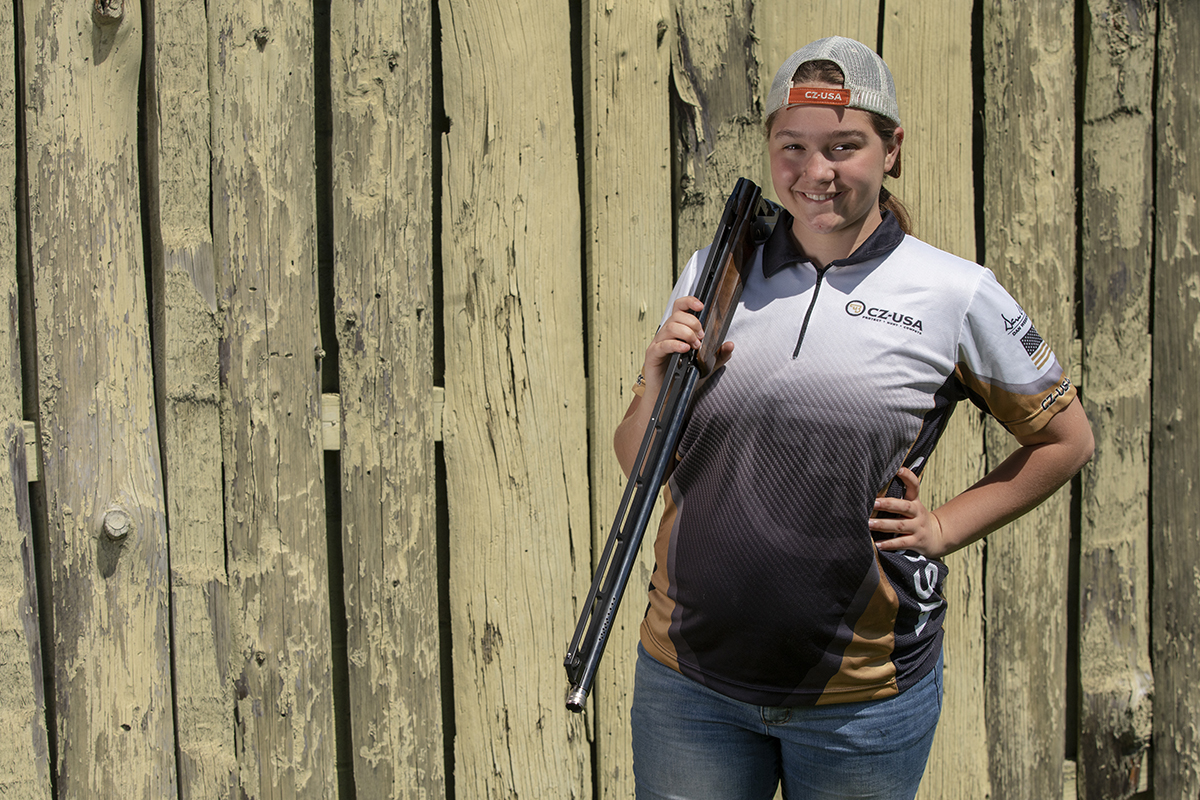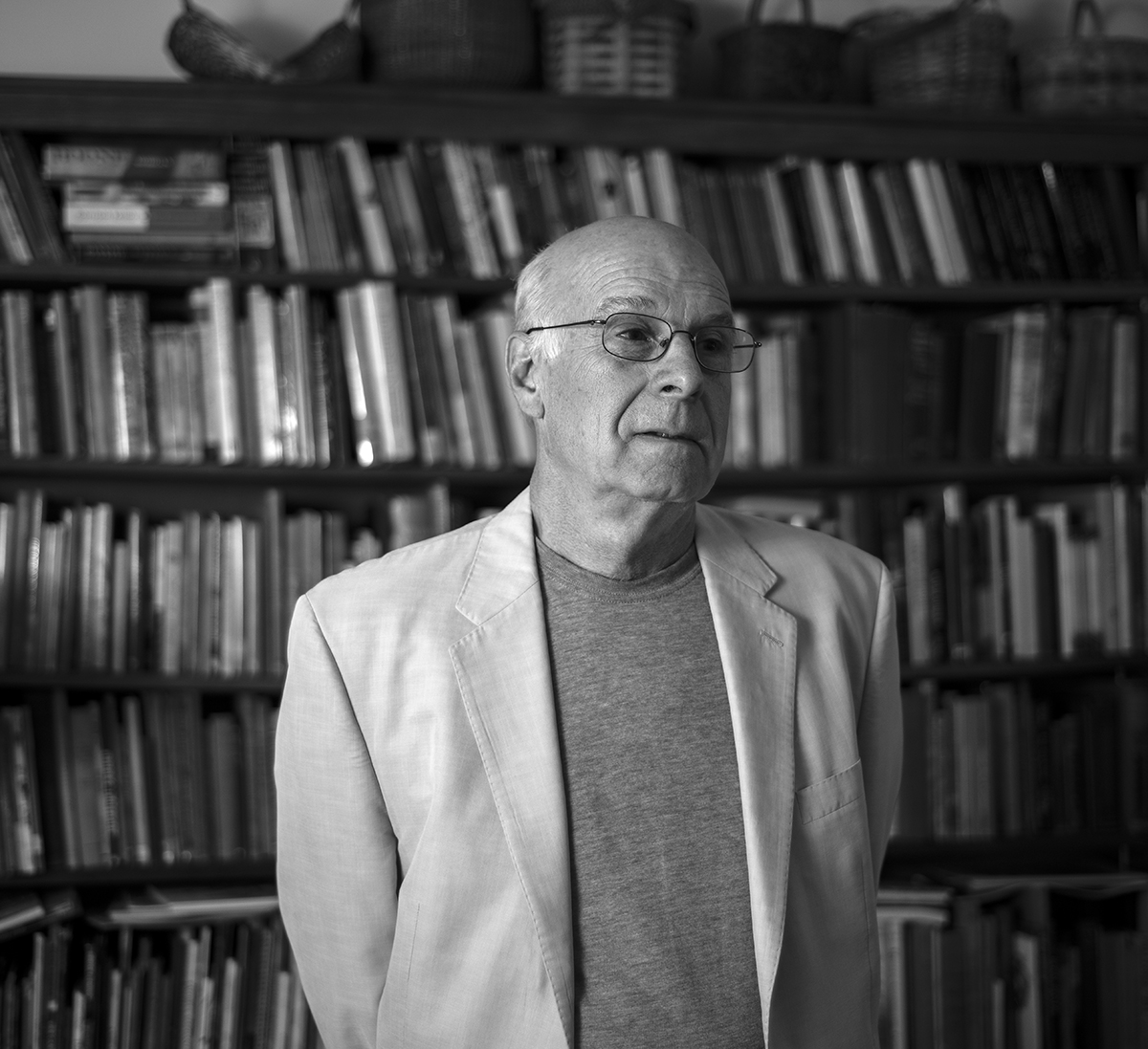The Break That Cracked A Girl

BY SARAH ELKINS
When you meet Makayla, there’s a good chance she’ll throw her hands in the air and proclaim, “Yay!” The first time this happens you might wonder, what are we celebrating? Eventually, you’ll learn the answer: Everything. This ebullient 15-year-old who has defied the odds in every way is celebrating everything.
It’s a sunny day. Yay. Her little brother, Jesse, just walked in the door from the bus. Yay. The ducks have waddled up to the chicken coop to share in the feed she has just flung across the ground. Makayla will open the gate and let them in. This, too, is a celebration. Pink Floyd’s Another Brick in the Wall comes on the radio, her prize-winning 4-H ham just sold for $500, her faded Coca-Cola t-shirt is fresh from the dryer. Yay, yay, yay! You get the idea. Makayla has a lightness of spirit unattainable by most.
Maybe it’s a chilly day. It’s not as cold as the day she stood stock-still shooting clays until she couldn’t feel her feet. Maybe there isn’t quite enough money to make it to the upcoming competition in Texas. That’s okay; she’ll make the next one.
Makayla Scott of White Sulphur Springs, WV is an anomaly. At fifteen, she is the West Virginia State 4-H Champion in sporting clays, skeet and high over all (HOA). She’s the West Virginia American Trap Association Sub-Junior Champion and the East Coast Sub-Junior Champion. She is the Non-Resident Junior Olympic Champion in both Tennessee and Pennsylvania, and she’s the first female from West Virginia to ever qualify for the Junior Olympics. And, that is just her 2018 resume.
Here’s the real anomaly: Makayla began competing in 2017. She hasn’t been shooting since she was in diapers like many of the kids traveling the tournament circuit. In fact, shooting sports was her family’s last-ditch effort to find something that could crack the shell she had built around herself.
Makayla’s dad, Telford, and her older brother, Johnathan, had encouraged her to try out for the 4-H Shotgun Team. They thought maybe she could find her niche in 4-H. Maybe she would make some friends, build a little confidence, break out of the personal barrier that kept her solitary and silent. Makayla wasn’t an unhappy kid prior to shooting, per se, but she was shy and unable to build relationships with the people around her. She was simply unreachable.
This, of course, is understandable when you know the rest of the story. Makayla was adopted by the Scott family when she was nine years old. She had been in the foster program since she was about six. Her first years of life had been spent alone for untold lengths of time while her birth-parents went to parties or rendered themselves otherwise absent. Fending for herself was just the way it was, and like all children born into neglect and addiction, she had no way to know this wasn’t normal.
Then Makayla lost her mother, the one who had maintained some semblance of normalcy for her. After her mother’s death, the proverbial wheels came off. Her birth-father’s tenuous grip on life loosened even more and Makayla was removed from the only home she’d known. She would spend the next few years pinging between temporary foster homes. She was quiet and withdrawn, considered “unadoptable” because of her age and seeming inability to bond with caregivers.
Makayla had learned not to rely on others. Then, as fate would have it, she landed in the home of Telford and Melissa Scott. Telford recalls Makayla’s early days. She wasn’t a bad kid. She was content to sit and entertain herself, but her smile was muted and vacant.
Thumbing through photos of herself around age seven or eight, Makayla says, “My smile looks weird. I didn’t really know how to smile so I made the face I thought was a smile.”
Eventually, the Scotts were able to adopt Makayla making her place in their home permanent. (Today, she is the middle of five children in the Scott family.) She slowly began to let down her guard but learning how to show affection was another hurdle to cross. Telford remembers that she would walk by and jab him in the arm with a finger. He realized she was trying to communicate something she didn’t have the words for.
“For Makayla, that was a hug,” he says. He kept watching her take small ventures outside of her protective shell, careful to never push. He understood that trust would have to be gained on her terms, not his.
This is difficult to imagine of the girl who belts out, “Yay!” and runs up to hug me when I come by the Scotts’ Farm to watch her train in the backyard. Mike Adkins, a professional shooting instructor and coach of the Greenbrier County 4-H Shotgun Club, is here. He’s been working with Makayla since she first picked up a shotgun. Back then she couldn’t look him in the eye, and when he asked her name, she couldn’t get the words out. He wondered how he was going to get a girl who would barely speak to shoot a gun.
As it turned out, shooting became Makayla’s first language, the thing that opened the world to her—or her to it. Hitting that first clay was the break that cracked the shell. But, that’s not to say everything has been a downhill ride since then. She trains hard, shooting about 1,000 rounds each week. She wants to make the U.S.A. Shooting Team, a goal that doesn’t seem so far off when you keep in mind she made the Junior Olympics on her first try.
After Makayla’s 2018 national debut and strong showing at the Junior Olympics, CZ-USA signed on as her gun sponsor. That was great news for the kid who walked around looking like she’d been clocked in the face due to the repeated kick of her ill-fitting shotgun. At one point, she even had to take months off to allow the deep bruising in her shoulder to heal. These days, according to Mike, “Mack’s got a shoulder of steel. She can shoot longer than just about anybody I know.”
The other day CZ-USA shipped her a new CZ All-American Trap Combo to use in the upcoming season. It’ll get as much use as she can muster, but the sport takes more than a physical toll. Telford’s checkbook is smoking; it’s an expensive sport. There are shells and clays to supply−thousands upon thousands of them−and each competition registration runs a few hundred dollars. That’s to say nothing of the travel and hotel expense. Making a serious run for the U.S.A. Shotgun Team and the Olympics will cost about $40,000 per year.
Today she’s dialing in her new gun, giving it a test run in the backyard, cracking clays one after the other. Mike stands behind and to the side of her, commenting on the new gun’s performance and Makayla’s form. He good-naturedly chides her when she misses, something that doesn’t happen often. A few dozen yards away Telford is manning the clay thrower. In between each of Makayla’s calls for the next bird, Telford scurries around grabbing something to prop under the thrower−a rock, an empty container, whatever he can reach before Makayla shouts the call. Sometimes he gives the machine a quick kick to change the trajectory of the next clay. He’s keeping her on her toes and in competition mode. She has a tournament in Savannah, GA coming up, and each national performance is another chance to nab a title and, hopefully, a new sponsor.
A few smaller one-off sponsors made some of her 2018 itinerary possible, and others are sure to line up as Makayla’s name gets out there. Dan Schindler, considered one of the best shooting instructors in the world and a former Team U.S.A. All American, has taken Makayla on as student because he sees in her “the right attitude.”
Of her training so far, Schindler says, “Makayla was taught and embraced the philosophy of Kaizen—the adding of one small improvement after another to her skills in order to build measurable gains. It is 100% about the slow, steady, step-by-step process of improvement.”
He adds, “To her credit, she plows through her trials and errors, smiling and confident a better performance will result. And, it has! Like many before her, she has made significant improvements to her shooting skills that will only get better as time passes. One must have faith in this process and Makayla does. That’s how I know higher achievements are in her future.”
Makayla trains with Schindler, who is as much a life coach and guru as he is a shooting instructor, as often as she can, but that means a trip to western North Carolina for each session. Another hotel, more fuel and meals on the road.
In the meantime, she has plenty to keep her busy besides her Olympic aspirations. Namely, her schoolwork. Makayla is homeschooled, which frees her up to train and travel as necessary. She is a serious student, and all her test scores are above average. Well, that is except for math, but she’s working on that. Telford says she’s going to have to put in a little extra study time this summer. That may be the one thing she isn’t celebrating, but she’s no stranger to hard work and steep learning curves. As a matter of fact, Makayla’s writing skills have garnered her a paid gig writing a column for Women’s Outdoor News and this summer she will serve as an intern at West Virginia Writers’ Annual Conference.
Schindler has one more thing to add: “My wife and I agree, Makayla is ‘an old soul.’ More than just determination, she has real grit. She is atypically patient with herself, a common trait among those who excel. In her academics and her shooting, she’s doing the necessary work. With real heart and fortitude, she’s resolutely climbing the ladder all winners must climb, regardless of sport or endeavor.”
Later, Telford sits with me at his kitchen table. Makayla has wandered off to her bedroom decorated in vintage Beatles album covers and a huge flag printed with the prism from Pink Floyd’s Dark Side of the Moon. (Old soul, indeed.)
His eyes fill, he shrugs, and smiles a tired smile. “There’s enough time for all of this. I want Makayla to have as much of her childhood as she can. She’s missed enough of it.”




